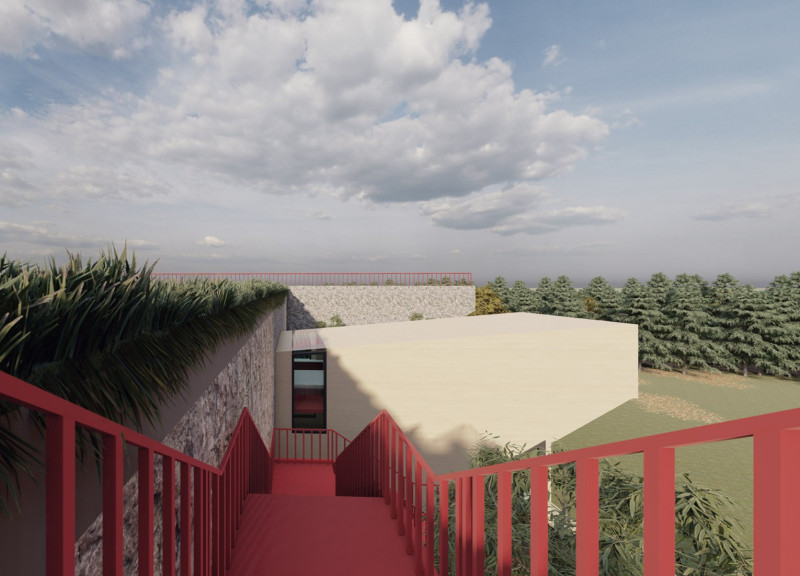5 key facts about this project
The "Parasitic Dwelling" project is located in Euskirchen, North Rhine-Westphalia, Germany, utilizing the SoDa-Brücke, an abandoned bridge without current utility. The design aims to convert this unused structure into a microhome community that emphasizes sustainability and innovative living. By repurposing the bridge, the project creates functional spaces that meet modern needs while enhancing the local environment.
Architectural Concept
The design focuses on the idea of parasitic dwelling, allowing microhomes to fit into the existing bridge structure. These homes can be fixed, attached, or even hung from the bridge, which minimizes their footprint while maximizing their utility. The arrangement promotes a sense of community among residents and integrates living spaces with the surrounding area.
Microhome Configuration
Each microhome caters specifically to young professional couples, encompassing 25 square meters that include essential living areas. The layout is open, effectively combining living, cooking, dining, working, and sleeping spaces into one cohesive unit. A foldable staircase provides access to the loft, optimizing space and enhancing the home's functionality.
Materiality and Sustainability
The construction employs Cross Laminated Timber (CLT) and cedar wood, chosen for their strength and sustainable characteristics. Insulation materials, such as stone and glass wool, ensure energy efficiency and meet fire safety standards. This careful selection of materials reflects a commitment to environmentally friendly building practices that improve the microhomes' overall performance.
Design Details
Natural light and ventilation play important roles in the overall design. Well-placed windows ensure a balance between privacy and outside views. A skylight in the sleeping area invites natural light, creating a connection with the sky above. The eaves flush-glaze roof light enhances the visual relationship between the interiors and the environment, providing a sense of openness and continuity.



















































